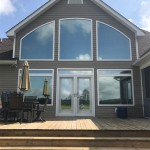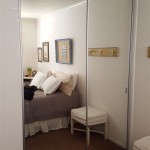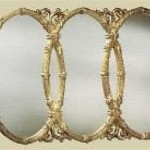How To Defog a Mirror
Foggy mirrors are a common nuisance, especially in bathrooms after a hot shower or during humid weather. This condensation occurs when warm, moist air comes into contact with a cooler surface, like the mirror. The water vapor in the air cools and condenses into tiny water droplets on the mirror's surface, obscuring the reflection. Several effective methods can be employed to prevent and remove this fog, ranging from quick fixes to more long-term solutions.
Ventilation
One of the most effective ways to defog a mirror is to improve ventilation in the room. Increasing airflow helps to reduce the humidity levels, preventing the conditions that lead to condensation. Opening a window or running an exhaust fan can significantly reduce mirror fogging. Even a small crack in the window can make a difference in air circulation. This method is particularly useful in bathrooms where shower steam is the primary cause of fogged mirrors.
For those with bathroom exhaust fans, turning on the fan a few minutes before showering and leaving it on for a short period afterward can help prevent and eliminate fog. Ensuring the fan is properly vented to the exterior of the building is essential for maximizing its effectiveness. Regular cleaning of the fan blades and vents is also crucial to maintain optimal airflow.
Heating the Mirror Surface
Raising the temperature of the mirror surface is another effective way to prevent condensation. A warmer mirror surface is less likely to cause the water vapor in the air to condense. Several methods can achieve this, including directing a hair dryer at the mirror for a short period. This quickly heats the surface, causing the fog to evaporate.
Another option is to install a heated mirror pad, specifically designed to warm the mirror and prevent fogging. These pads are typically installed behind the mirror and are wired into the bathroom's electrical system. They provide a consistent, low-level heat that keeps the mirror surface above the dew point, preventing condensation from forming.
Running hot water over the mirror for a minute or two can also raise the mirror's temperature sufficiently to prevent fogging. While effective, this method can be less energy-efficient than other options, especially if hot water is generated by an electric water heater.
Applying Anti-Fogging Solutions
Several commercially available anti-fogging solutions can be applied to the mirror surface to prevent condensation. These products typically work by creating a hydrophilic layer that attracts water molecules and causes them to spread out into a thin, transparent sheet rather than forming individual droplets that obscure the reflection.
These solutions are often sprayed onto the mirror and then wiped clean, leaving behind an invisible coating that lasts for a few days or weeks, depending on the product and usage. Some DIY solutions, such as shaving cream, can also be used as a temporary anti-fogging treatment. A thin layer of shaving cream rubbed onto the mirror and then buffed off can provide a few days of fog-free reflection.
When choosing an anti-fogging product, it's essential to select one specifically designed for mirrors and to follow the manufacturer's instructions carefully. Some products may contain chemicals that could damage certain types of mirror coatings.
Dehumidification
Reducing overall humidity levels in the room is a long-term solution to prevent mirror fogging. This can be achieved by using a dehumidifier, especially in chronically humid environments. A dehumidifier removes excess moisture from the air, lowering the dew point and reducing the likelihood of condensation on cool surfaces like mirrors.
Properly sizing the dehumidifier for the room is essential for effective moisture control. Overly large units can consume excessive energy, while undersized units may not be able to adequately reduce humidity levels. Regularly emptying and cleaning the dehumidifier is also necessary to maintain its efficiency.
Dehumidification can also be beneficial for overall indoor air quality, helping to prevent mold growth and other moisture-related issues.
Hydrophilic Coatings
While some anti-fogging sprays create a temporary hydrophilic layer, some mirrors are manufactured with a permanent hydrophilic coating. These coatings work similarly to anti-fogging sprays, attracting water molecules and causing them to spread into a thin sheet, maintaining a clear reflection even in humid conditions.
These mirrors are a more expensive option upfront but offer a long-term solution to mirror fogging without requiring regular application of sprays or other treatments. They are particularly beneficial in frequently used bathrooms or other areas prone to high humidity levels.
When considering a mirror with a hydrophilic coating, verifying the manufacturer's claims and reading reviews from other users can help ensure product quality and effectiveness.

Car Mirror Fog Free How To Remove On Glass In Rain Mist

Mirror Defog Demist S Introduction

Clean Defog Your Bathroom Mirror

How To Easily Defog A Bathroom Mirror And Prevent Fogging Modo Bath

Drivers Are Unlocking A Bonus Feature On Dashboard Which Defogs Mirrors It S Winter Lifesaver The Sun

Led Bathroom Mirror With Demister Remer

Dental Automatic Anti Fog Mirrors For Oral Photography Reflector Defog

Calorique Defogging Heated Mirror

Inster Iridescent 28 In W X 36 H Rectangular Frameless Rgb Led Lighted Defog Wall Mount Bathroom Vanity Mirror Hdodbynmr004 The Home Depot

Inster Luminous 36 In W X 28 H Rectangular Frameless Led Mirror Dimmable Defog Wall Mounted Bathroom Vanity Wshdrmmr0068 The Home Depot








